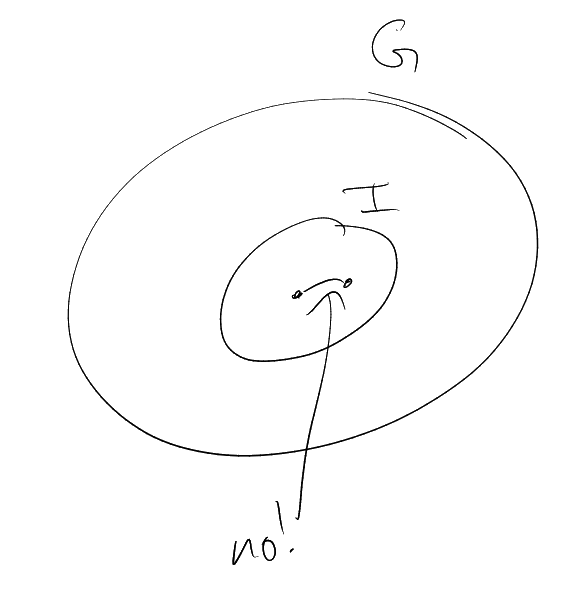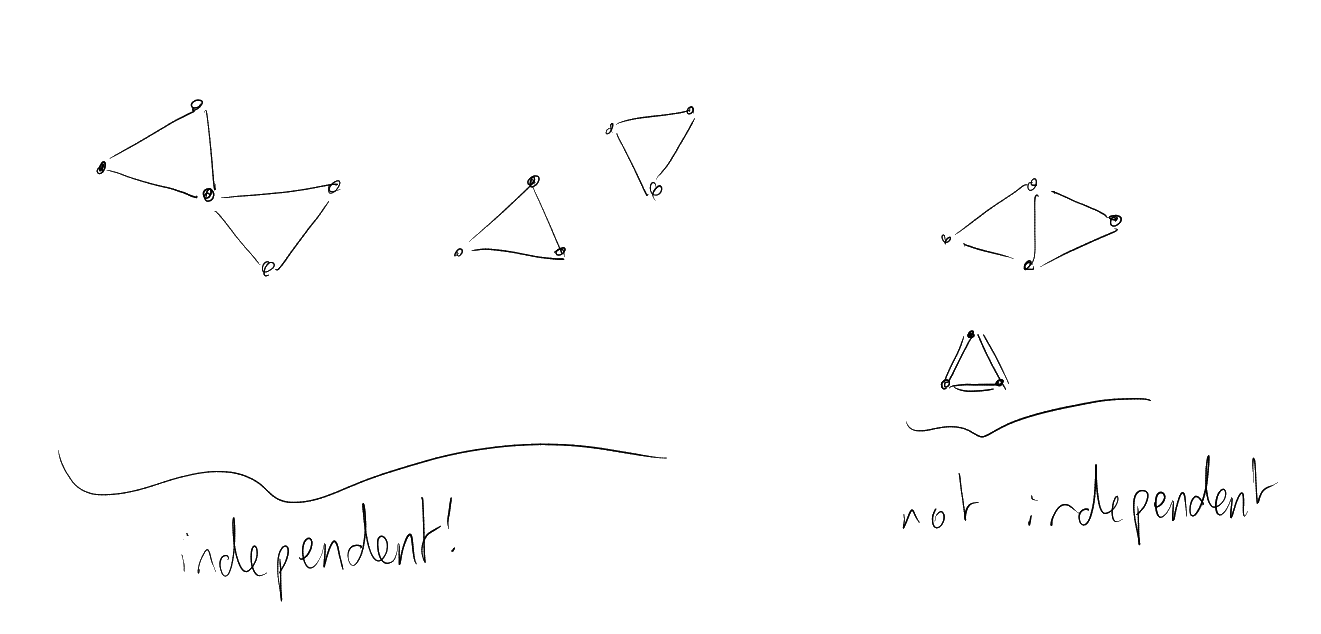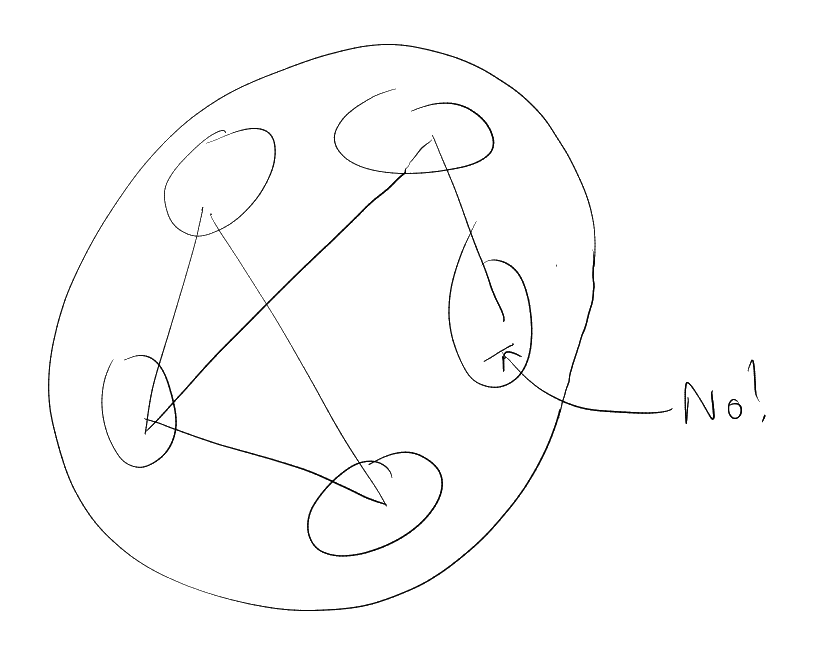2 The Ramsey numbers
Theorem (Erdos-Szekeres, 1935).
.
Proof.
Induction. See e.g. GT. □
Note.
.
Idea 1: If randomly colour ,
we have
triangles :(
Idea 2: We want to bias our distribution in favour of
– colour
“red”. Say .
Sad news: if
then contains
a with high
probability. :(
Theorem (Erdos, 1960s).
for some .
Proof sketch.
Sample ,
then define .
For this to work we need .
So .
So take .
□
Remark.
This is called the “deletion method”.
Fact (Markov). Let be a
non-negative random variable. Let .
Then
That is
for any .
Fact. For
we have
and
Definition 2.1 (Independence number).
Let
be a graph. Then
is independent if
in
for all .
We use .
Note.
We are trying to construct a triangle free graph on
vertices
with .
Lemma 2.2.
Assuming that:
Then
with probability tending to
as
(known as “with high probability (w.h.p.)”).
Remark.
We actually have
in this lemma.
Proof.
Let ,
for some .
Let
be the random variable that counts the number of independent
sets in
.
𝟙
by plugging in .
So by Markov
We have a method for bounding the probability that
is large: Markov
says that .
What about bounding the probability that it is small?
Fact: Let be a
random variable with ,
finite. Then
for all ,
Reminder:
|
|
Lemma 2.3.
Assuming that:
Then |
|
with high probability.
Proof.
Let
be the random variable counting the number of triangles in
. Note
Mean is straightforward:
Variance is a little more tricky. First:
|
𝟙 |
We can write
Since the pairs of events are independent whenever
, we
have
Now note
□
Recall that before we showed that for ,
, we
have
with high probability.
Proof of lower bound on .
Set ,
. Let
and let
with a
vertex deleted from each triangle. Then with high probability we have
We also have with high probability:
So with high probability ()
and () hold. So there
must exist a graph on
with no triangles and
independence number
(actually not quite, but would have worked if we multiply one of the parameters by a constant or something).
□
Definition (Chromatic number).
Let
be a graph. The chromatic number of
is the minimum such
that there exists such
that no edge has both ends in the same colour.
denotes
the chromatic number.


